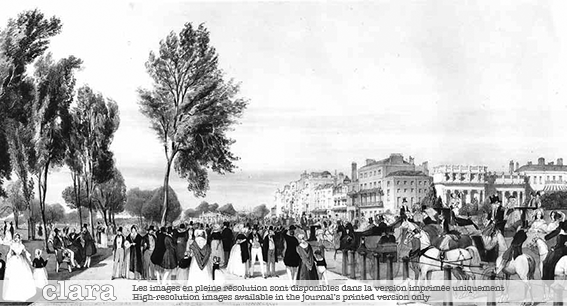Strollers as observers of the "big city landscape" in early 19th-century West End London
Main Article Content
Abstract
The history of cities and spaces has largely been limited to accounts of the lives of architects and their patrons or of their planning. In contrast, this essay focuses on how individuals can be used to explain or articulate networks of social, cultural and spatial relationships.
The specific actors I am interested in are the London cousins of Charles Baudelaire's 'flâneurs', nonchalant observers of the 'landscape of great cities', who feel at home in the anonymous flow of the urban crowd. My intention here is to explore the relationship between the individual and the urban crowd in the particular setting of the West End of early nineteenth-century London. London, a modern city with its new urban spectacles, created a dreamy atmosphere for the flâneur. The novelty of these spaces gave a sense of loss of spatial reference, and made the urban environment a strange and sublime experience. This kind of reaction was the result of the relationship between the new metropolitan society (with its flâneurs) and the new urban spaces.
Article Details

This work is licensed under a Creative Commons Attribution-NonCommercial-NoDerivatives 4.0 International License.
References
ARNOLD, D. 2006, Rural Urbanism: London landscapes in the early nineteenth century, Manchester, Manchester University Press.
DE WITT HYDE, W. 1998, Practical idealism, New York, The Macmillan Company.
ELMES, J. 1827, Metropolitan Improvements or London in the Nineteenth Century, Londres, Jones & Co.
LEIGH, S. 1820, New Picture of London, Londres, ed. Samuel Leigh.
PREMIER RAPPORT, 1812, « Premier Rapport à Leurs Majestés les Commissaires des Bois, Forêts et Revenus fonciers », Londres.
REACH, A. 1849. « The Lounger in Regent Street », dans P. Gavarni; A. Smith, Gavarni in London, Londres, D. Bogue.
SUMMERSON, J. 1977, Architecture in Britain: 1530-1830, 6th rev. (2d integrated), ed. Harmondsworth, New York, Penguin Books.

